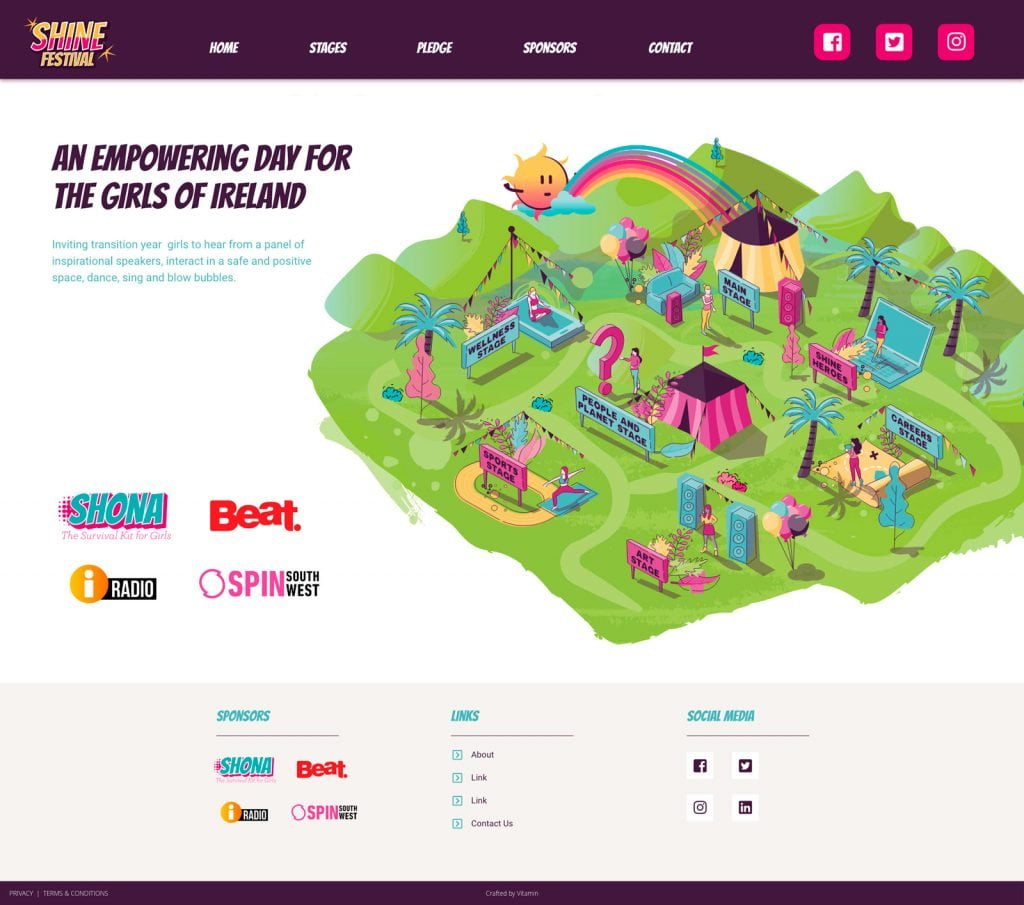Website Design considerations must be undertaken with focus and care, whether you’re designing a new website or redesigning an existing one. Your website is your company’s most important salesperson, promoting your brand and encouraging your consumers to interact with your business.
When it comes to designing your website, the usability of the website and ensuring your customers have a strong user experience (UX) should take precedence over all else.
Ease of use makes it more enjoyable for your customers and target audiences to interact with your website, thus increasing the likelihood of a return visit. For every stage of designing your website design considerations, the focus should remain not on what you would like, but on the end-user.
Here are 5 website design considerations to take into account when designing a website:
5 Key Website Design Considerations
Navigation
Our first of the key website design considerations is navigation. Website navigation is a critical aspect of differentiating your brand. A website that can be easily navigated through acts as a roadmap and guides website visitors to the most important areas on your site.
Directing users to this key information is vital to your brand creating a more positive user experience for your consumer which ultimately leads to an increase in overall leads, sales, and satisfaction. Creating a sitemap can really help to determine the navigation of the website.
Clearly highlighting these areas of interest can have a beneficial impact on your website. For example, a real estate company should make the property listings on their website more pronounced and easier to find compared to some of their other materials.
Navigation through a website is achieved through a collection of links that combine to form a website navigation menu. Navigation can almost make or break a consumer experience.
Better sight navigation makes it easier for the customer to find the information that interests them, which is likely to reduce the bounce rate. Being specific in your wording and also offering consumers the recommended next step can also positively impact your website.
Mobile-Friendly
54% of all website traffic is generated through mobiles. This is why modern businesses should be much more aware of the importance of creating a mobile-friendly website.
The average person spends almost 7 hours per day on their phone using the internet. Ensuring that your website provides a positive consumer experience through a mobile platform can have positive effects on future lead generation and customer loyalty.
A mobile-friendly website is a site that is designed to display on a smaller screen such as with a phone or tablet. Standard desktop websites tend to not transfer well to the smaller screen, so having a mobile optimised site could be a major benefit to your business.
A responsive web design formats the content on the website to a more mobile-friendly version. This is usually achieved through quicker download speeds, larger and easy-to-read text as well as touch-friendly elements.
Improving this will come with benefits such as better search visibility, brand identity, and overall experience. This is a crucial element of your website design considerations.
Tone
The content on your website has a tone that comes across almost like a personality. The way that your website’s content is presented to the consumer has an impact on the tone that is created, making it a very important aspect of your website design considerations.
Depending on the industry that the business is in or the products/services provided the tone alters within the business and therefore the website. Matching the tone of your website to your audience can have beneficial effects on your website.
Having a strong and consistent tone across your website will help to solidify your brand online and provide a sense of identification. Setting the right tone is crucial for reducing bounce rates and keeping the consumer engaged on the website.
Whether your business is B2B or B2C it is crucial to set the right tone for all potential visitors – a key element of your website design considerations.
Some of the main points to help determine the tone you want to set include:
- Formality – is your business more casual when addressing clients or would it be a more formal greeting? This is one of the first elements that you should observe when attempting to convey your brand’s tone to the website. For example, a dog grooming website could include some use of slang words, whereas a business website would require more professional language.
- User Demographics – Being aware of the general demographics (such as average age range) of your users can greatly help you decide what type of tone your website should create. Your content might then be affected based on the preferences of your audience. Creating a customer persona might help you to decide this.
Consistency
Consistency is key when it comes to website design considerations. To provide your customers with an experience they are happy with and willing to return to, it is key to remain consistent with both your content and your website.
Consistency ensures that your website looks logical and aspects from your website design such as headers, footers, and sidebars work well and come together to give the consumer a visually pleasing piece of content.
A consistent website presents a sense of familiarity for users and is easily and tastily navigable throughout. You can achieve consistency on your website through a number of variables from the correct use of pages to the right choice of font.
Ensuring certain elements of your website are consistent provides a sense of brand identity for both the business and the consumer, making it an important aspect of your website design considerations.
Elements that should be consistent include:
- Design – the visual design of your website should remain consistent. This will provide a visually appealing experience for consumers and encourage repeat visits. For example, using the same type of font across your website creates a sense of familiarity for consumers.
- Content – the content that is put on your website should also remain consistent and fit with the brand image of the company. For example, if a company is known for writing with humour, and decides to switch to a more serious tone it might confuse the consumer.
Staying consistent with the style and timing of your posts can be beneficial to your website.
Creating a consistent website benefits the business as it gives the consumers the ability to carry out tasks more quickly which improves the user experience. It also improves the navigation which again makes the sight more usable by deleting some pain points for the consumer.
Colours & Imagery

For website design considerations, colour can play a huge role in conveying a message to the consumer. Colours help to translate different emotions to the target audience.
Colours have different meanings behind them, and certain colours are associated with different elements. For example, red is seen as a vibrant, passionate colour that stimulates the consumer whereas green is a more relaxed and earthy colour that has a completely different effect on the consumer.
Colours are used to make the design of the website visually pleasing, however, they can also be used to attract attention to specific elements or calls to action on the website. Understanding your audience and their preferences can help you pick the colour suitable for your website design considerations.
Imagery also has the potential to grab our attention, and evoke an emotional response. The images chosen in content that is published on a website should reflect the brand’s image and values.
Using good imagery on your website creates a positive visually appealing experience for your consumer that will leave a good impression. The imagery used should help convey the message that the business wants to get across.
Using consistently good imagery throughout the website and content design will have a marked impact on results.
We hope that you have enjoyed our article and gained some insight into 5 website design considerations for your brand’s site.
Now that you’ve read our website design considerations, why not read some more of our other articles, or view our client portfolio here.
Do you need help with your website? Contact us today to get your project started.


